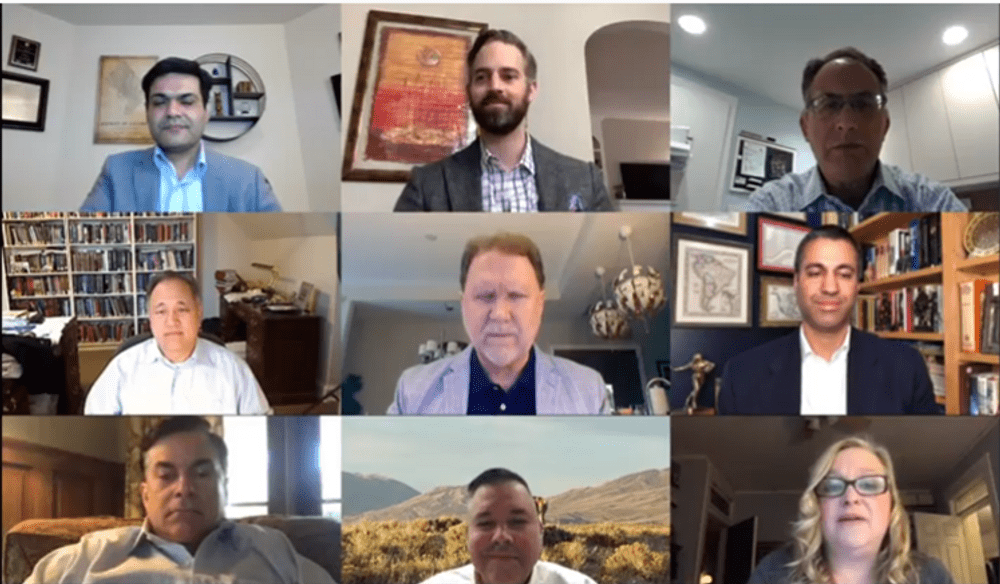Broadband Deployment Advisory Committee Approves Reports on Disaster Response and Workforce Training
November 6, 2020 — Members of the Federal Communications Commission’s Broadband Deployment Advisory Committee voted on October 29-30 on reports and recommendations from committee’s three working groups. The body approved reports completed by the staff of the working groups on Disaster Response and R
Jericho Casper

November 6, 2020 — Members of the Federal Communications Commission’s Broadband Deployment Advisory Committee voted on October 29-30 on reports and recommendations from committee’s three working groups.
The body approved reports completed by the staff of the working groups on Disaster Response and Recovery and Deployment, Job Skills, and Training Opportunities.
However, it moved to revise recommendations presented in the Increasing Broadband Investment in Low-Income Communities working group’s report.
“Each of these working groups fits so well into the mosaic of connectivity issues we’re struggling with during the pandemic,” said FCC Chairman Ajit Pai, during the meeting’s opening remarks. “The three expert reports you are going to be considering go to the heart of three of the issues we need to resolve in order to ensure ubiquitous broadband access and adoption.”
In the face of a global pandemic, the working groups moved to publicize “best practices” for connecting unserved and underserved communities.
In the process, the groups addressed issues for increasing internet deployment and adoption among low-income individuals.
Disaster Response
In July, the FCC ordered the Disaster Response and Recovery working group to prepare a report documenting various strategies stakeholders implemented to deal with the deployment-related challenges presented by COVID-19 pandemic.
After studying different entities responses, the group generated focused on emergency responses, included establishing non-emergency permitting practices that can easily transition in emergency situations and identifying the staff and resources necessary to do so.
The team recommended having a single emergency contact in each municipality and working to foster good relationships and communications with stakeholders.
The group’s report also recognized that as the availability of broadband increases, the challenge of adoption will increasingly demand to be tackled. The Disaster Response working group’s report found that 108 million Americans have broadband available to them but have yet to adopt it.
In its report, the group identified the need for federal funding to address both broadband availability and adoption. It said the federal government has a role to play in adoption, as certain government functions are now solely accessible online, as a result of the pandemic.
Job Skills and Training
The Broadband Infrastructure Deployment, Job Skills, and Training Opportunities working group’s report recommended creating a robust broadband infrastructure workforce and eliminating the tech skills gap, in an effort to get Americans back to work.
FCC Commissioner Brendan Carr, who has been an advocate for growing the infrastructure workforce, joined the BDAC meeting to introduce the Training Opportunities report. In his remarks, Carr reported that a shortage of technical workers persists, as the U.S. has a 20,000 shortage of tower climbers alone.
According to the panelists, a new study by the National Spectrum Consortium found that 4.6 million jobs will be created as part of the deployment of the 5G wireless standard in the country.
To confront the issue of the government investing in an industry with few workers, the group’s report suggested that the federal government invest in training programs aimed at reskilling the U.S. workforce.
Specifically, the team calls for part of the Congressionally-approved $80 billion budget to deploy broadband infrastructure, be utilized to address telecommunications infrastructure workforce training needs.
The team further noted the importance of infrastructure training programs being implemented and promoted in rural and urban areas equally.
The Increasing Broadband Investment in Low Income Communities report, addressing affordability and digital literacy needs, is proposed to be revisited during BDAC’s December meeting.









Member discussion